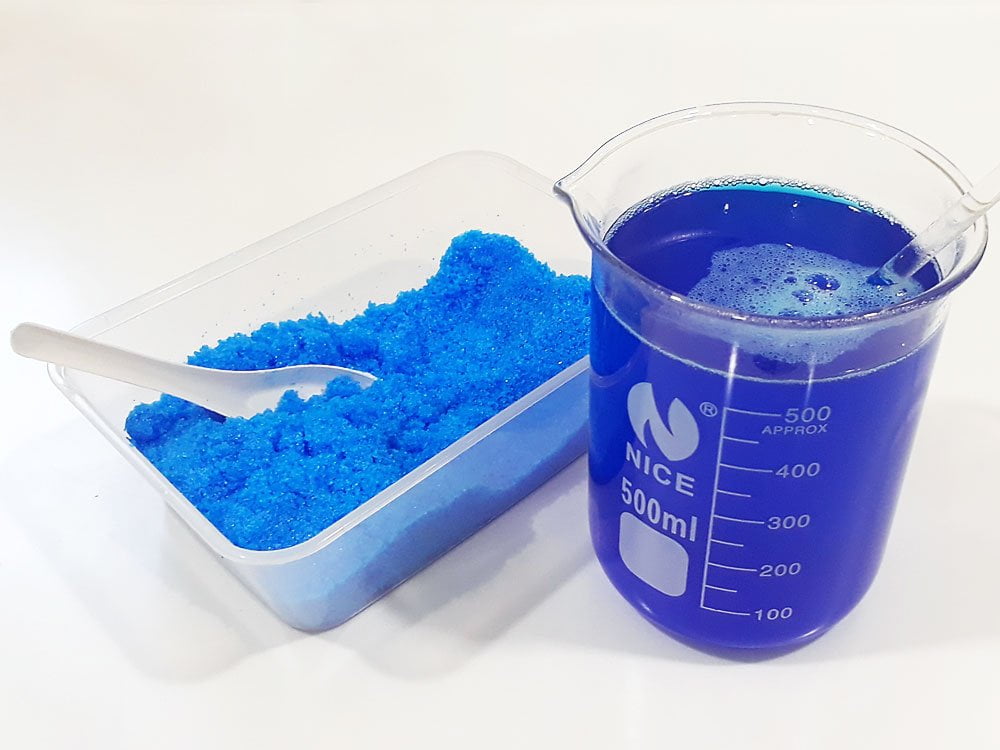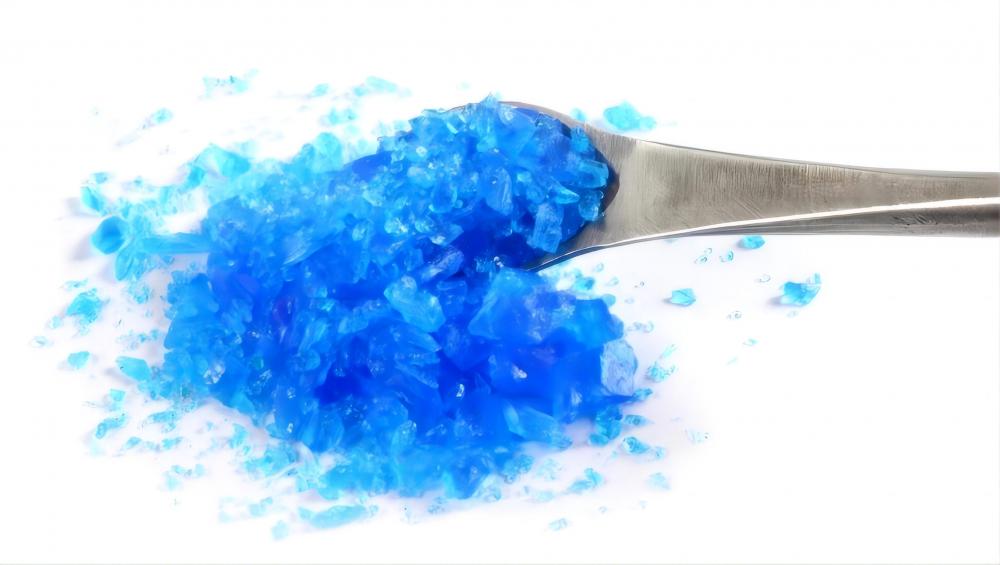Copper sulfate belongs to one of the Catalysts And Auxiliaries, and is often used in aquaculture to remove flagellates and ciliates such as rotifers from fish, as well as being used as an Algaecide to control excessive cyanobacteria and filamentous green algae in ponds, and can effectively kill certain fungi and bacteria.Copper sulfate aqueous solution is an acidic reaction, there is an astringent effect and a strong ability to kill pathogens, for general protozoa and low-grade algae with gelatinous, there is a strong poisoning effect. How to use copper sulfate in aquaculture, what is the dosage, what are the contraindications to be noted? Only with full understanding and in-depth research can we maximize its efficacy. 1.0.5PPM CuSO4.5H2O and 0.2PPM ferrous sulfate sprinkled throughout the pool, can prevent and control gill cryptoflagellates, mouth filariasis, rotifers, oblique tube worms, trichoderma and Lernaea chinensis and other diseases. 2.0.7PPM whole pool sprinkling, can prevent and control gill cryptoflagellates, rotifers, oblique tube worms and Podocarpus and other diseases, but also can kill fish in the pool of green mud moss, water reticulation algae, blue-green algae, etc., once a day for two consecutive times, can be killed in the pool of the vertebrate snail, to prevent oral schistosomiasis. 3.Hanging the bag method with the food field can prevent or treat some mild bacterial and parasitic fish disease, which has little effect on the water quality.

4.Splashing CuSO4.5H2O and ferrous sulfate, so that the water body into a concentration of 0.7 mg / liter, can kill the vertebrate snails in the water body, flat rolled snails, prevention of diphtherocephalus and schistosomiasis. 5.0.9PPM CuSO4.5H2O and 0.2PPM ferrous sulfate mixture, the whole pool sprinkling, in addition to the prevention and control of protozoa disease, but also on the Chinese lerpineum disease has a better prevention and control effect.
6.The prevention and control of gill rot, red skin disease and gill cryptoflagellates, fish boobies, rotifers, oblique tube worms and other protozoan diseases: copper sulfate and bleach combination, at a concentration of 8 to 10PPM immersion 20-30 minutes. Splash the whole pool with 0.4ppm copper sulfate, ferrous sulfate combination (5:2), or dip and wash the sick fish with 8ppm copper sulfate solution for 20 minutes. 7.8PPM CuSO4.5H2O and 10PPM bleach mixture, at a water temperature of about 25 ℃, dip and wash the fish for 20 to 30 minutes, can prevent and control gill rot, red skin disease. Copper sulfate can treat fish and shrimp gill rot, red skin, gill cryptoflagellates, oral filariasis, rotifers, oblique tube worms, trichogramma, Chinese lerpa, half eyebrow worms, tongue cup worms, diphtheridiomycetes and blood-dwelling schistosomes, etc., and can also prevent and control green slime moss, aquatic reticulata and hydrozoa.CuSO4.5H2O and ferrous sulphate combination (5:2) is one of the commonly used medicines in the treatment of fish diseases, which can be used to prevent and control parasitic gill disease and skin disease.

A few problems need to pay attention to CuSO4.5H2O has the effect of promoting the growth of small melon worms, and it can not be used for the treatment of white spot disease. The more organic matter in the pool water, the greater the PH value, the less toxic CuSO4.5H2O is, and the greater the safe concentration, while the higher the water temperature, the greater the toxicity of CuSO4.5H2O, and the smaller the safe concentration. Because the safe concentration range of CuSO4.5H2O is small, it is important to be accurate when measuring the volume of pool water and calculating; at the same time, the temperature of the water in which the drug is dissolved should not exceed 60℃, or it will be easy to be ineffective. Copper sulfate will cause enlargement of renal tubules and necrosis of kidneys around tubules; destruction of blood-suitable tissues; increase of liver fat; copper can be left in gills, muscles and liver of fish; and it can hinder intestinal enzymes, thus affecting feeding and growth of fish, so it can't be used frequently.




